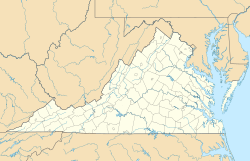Forest Hill Historic District | |
 Scene on Springhill Avenue | |
| Location | Roughly bounded by Riverside Dr., Forest Hill Park, Reedy Cr., Bassett Ave., Southcliff Rd., Cedar Ln.,, Richmond, Virginia |
|---|---|
| Coordinates | 37°31′12″N77°28′28″W / 37.52000°N 77.47444°W |
| Area | 140 acres (57 ha) |
| Built | c. 1895 |
| Architect | Frederick Hyland, George Matsumoto, et al. |
| Architectural style | Late 19th And 20th Century Revivals, Late 19th And Early 20th Century American Movements, et al. |
| NRHP reference No. | 12000851 [1] |
| VLR No. | 127-6069 |
| Significant dates | |
| Added to NRHP | October 3, 2012 |
| Designated VLR | June 21, 2012 [2] |
The Forest Hill Historic District is a national historic district located at Richmond, Virginia. The district encompasses 1,106 contributing buildings and 5 contributing structures located south of downtown Richmond. The primarily residential area developed starting in the early-20th century as one of the city's early "streetcar suburbs." The buildings are in a variety of popular late-19th and early-20th century architectural styles including frame bungalows, Colonial Revival, Tudor Revival, and Mission Revival. The buildings in Forest Hill exemplify a high quality of materials in their construction. Brick is the dominant building material. Notable non-residential buildings include Forest Hill Presbyterian Church; Good Shepherd Episcopal Church; and Forest Hill Church of Christ. [3]
It was added to the National Register of Historic Places in 2012. [1]



